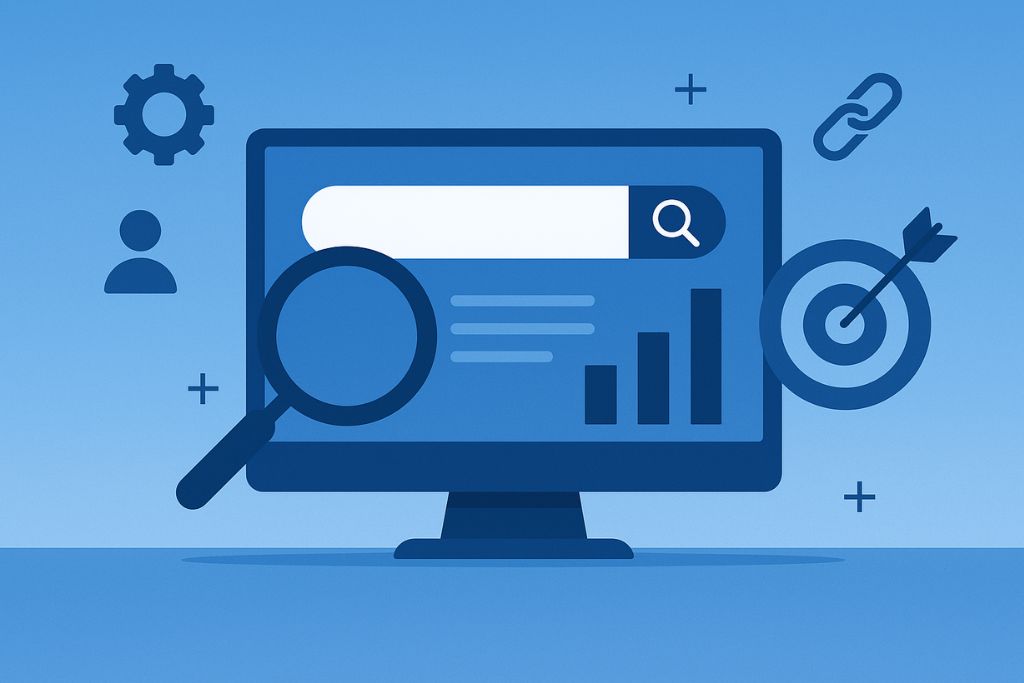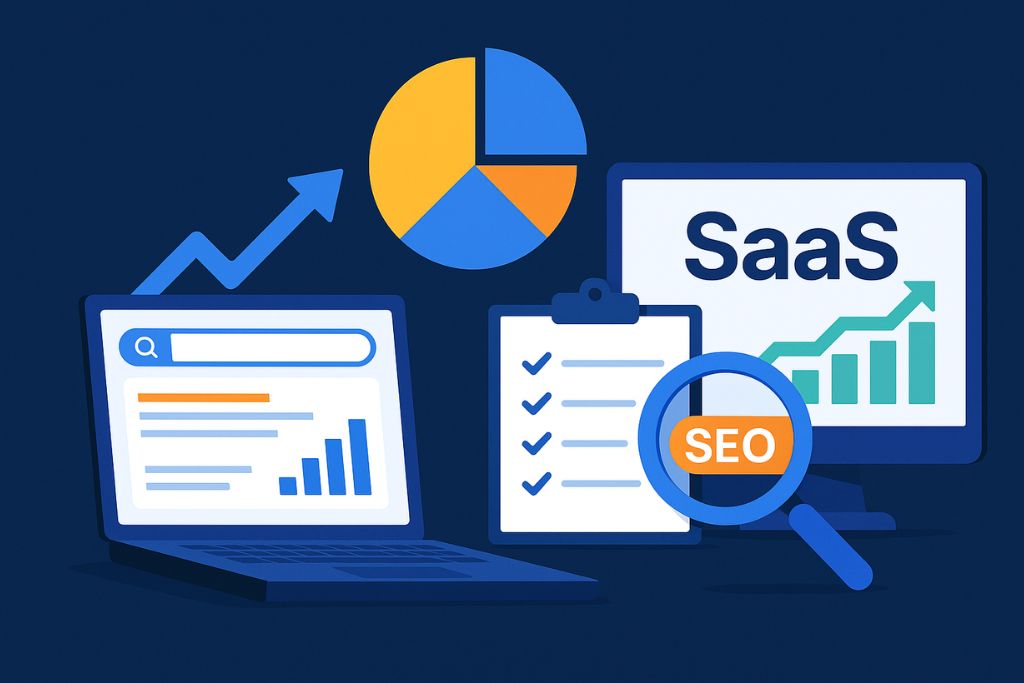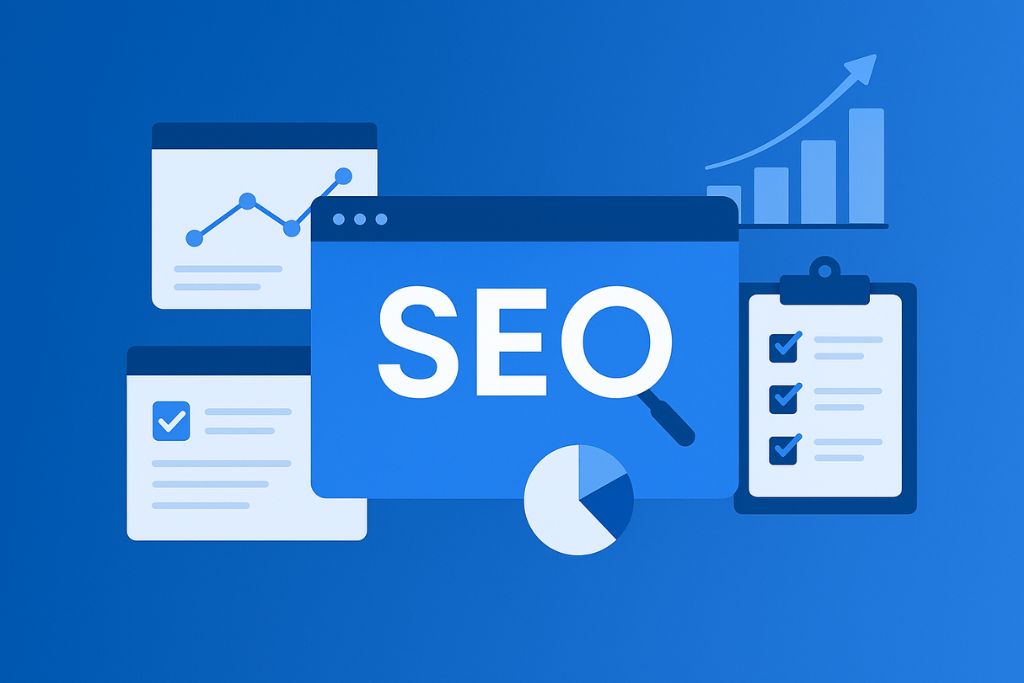In 2025, standing out in the crowded SaaS market requires more than just a great product. Your potential customers are searching online for solutions, and if your website isn’t optimized, you’re missing out on valuable opportunities. That’s where a solid SaaS SEO strategy comes into play.
This guide will walk you through the essentials of SaaS SEO, providing you with a practical checklist and actionable tips to enhance your online presence. Whether you’re looking to attract more qualified leads, improve your search rankings, or drive more demo requests, we’ve got you covered.
We specialize in helping SaaS companies like yours grow organically. From comprehensive keyword research and content strategy to technical SEO and link building, our tailored services are designed to boost your visibility and drive sustainable growth.
Let’s dive in and explore how you can leverage SEO to achieve your business goals in 2025.
What Is SaaS SEO and Why It Matters for Revenue Growth
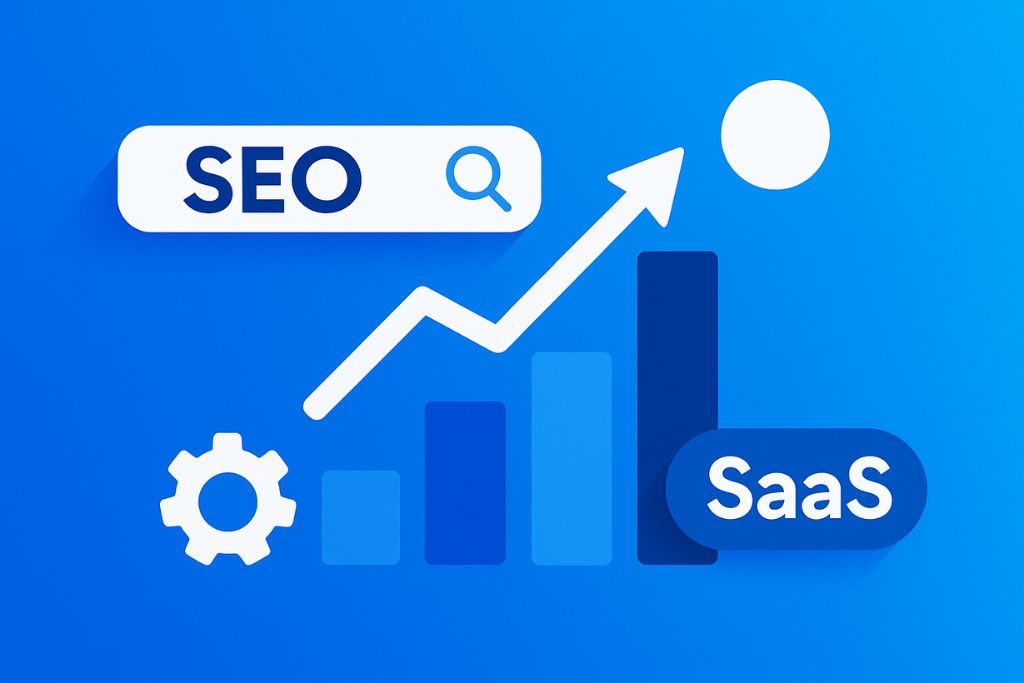
SaaS SEO is the process of making your software company easier to find through search engines. Instead of chasing leads, it helps you attract people who are already looking for your product or solution. A solid saas seo strategy ensures you’re visible when it matters most at the point of search.
This matters because organic traffic is one of the most cost-effective ways to bring in qualified leads. These are users actively searching for software like yours, which means they’re more likely to convert into customers. And in SaaS, more customers mean higher monthly and annual recurring revenue (ARR).
Unlike paid ads that stop delivering once you pause spending, saas seo builds a system that works long-term. When done right, it brings steady traffic, improves conversions, and scales with your business.
Here’s what a strong SEO approach covers:
- Optimized website structure and performance
- High-quality content that solves customer problems
- Keywords that match what your buyers are searching for
Using a proven saas seo checklist keeps your efforts on track. It ensures your site is technically sound, your content is aligned with search intent, and you’re ranking for keywords that actually drive business.
Small improvements like faster page speed or better keyword targeting, can make a big difference over time. These are the kind of saas seo tips that turn traffic into demos, and demos into paying users.
Complete SaaS SEO Strategy for Long-Term Pipeline

If you want your SaaS business to grow steadily, you need more than short-term wins. You need a strategy that brings in the right leads month after month and that’s where a complete saas seo strategy comes in. This is not just about getting clicks. It’s about building a system that turns search traffic into pipeline and revenue over time.
At saasseo.com, we don’t focus on vanity metrics. Instead, we build full-funnel SEO campaigns that help SaaS companies rank higher, attract better leads, and close more deals. Here’s how to put that kind of long-term strategy into place.
Know Your Ideal Customer
Before doing anything else, start by understanding your audience. Who are you trying to reach? Are they founders, marketing teams, or product managers? Each group has different pain points and searches differently.
When you know who you’re targeting, you can write content that speaks to their specific needs. This approach helps build trust, lowers bounce rates, and increases demo bookings.
You can also segment your keywords and content by funnel stage, so you’re reaching people whether they’re just exploring or ready to buy.
Build a Keyword-First Foundation
A strong saas seo guide always begins with the right keywords. Start with terms your target audience is searching for, not just the ones with high volume but those with high intent.
For example:
- Product-focused keywords like “email automation software”
- Comparison keywords like “best CRM vs HubSpot”
- Problem-based keywords like “how to improve user onboarding”
Once you build this keyword list, assign each one to a page on your site. This helps you avoid overlap, improves rankings, and ensures every page has a purpose.
Optimize Your Site Structure
Search engines and users love websites that are easy to explore. Your site should load fast, work well on mobile, and make it easy to find information. A clean structure also helps with indexing and ranking.
For SaaS companies, it’s important that product pages, use-case pages, and blogs are all interlinked properly. This supports both your visitors and your SEO performance.
Create High-Value, Intent-Based Content
Content is the engine of any saas seo strategy. But not just any content, it must be designed to solve real problems.
Start by creating blog posts that answer common customer questions. Then, build detailed landing pages that explain your product features, use cases, and integrations. Add comparison pages that show how your product stacks up against competitors.
This type of content not only drives traffic, but also warms up leads before they ever speak to sales.
Follow a SaaS SEO Checklist
A reliable saas seo checklist helps you stay on track as you scale.
Use it to check that:
- Each page targets a clear, relevant keyword
- Meta titles and descriptions are properly written
- Pages load quickly on all devices
- CTAs are easy to spot and align with the visitor’s intent
- Content is regularly updated to stay competitive
At saasseo.com, we use checklists like these in every stage, from audits to execution to ensure nothing is missed.
Track, Learn, and Adjust
Your SEO strategy should grow with your business. Keep an eye on what’s working and what isn’t. Use analytics to measure demo requests, traffic growth, and keyword performance.
Re-optimize pages that drop in rankings. Expand on content that’s already working. And build on your wins to drive an even more consistent pipeline.
Don’t treat SEO as a one-time project. It’s a long-term growth lever. The earlier you invest in building the right foundation, the sooner you’ll see results that compound over time. The goal isn’t just rankings, it’s predictable growth through qualified traffic and consistent demo conversions.
SaaS SEO Checklist for Website Optimization
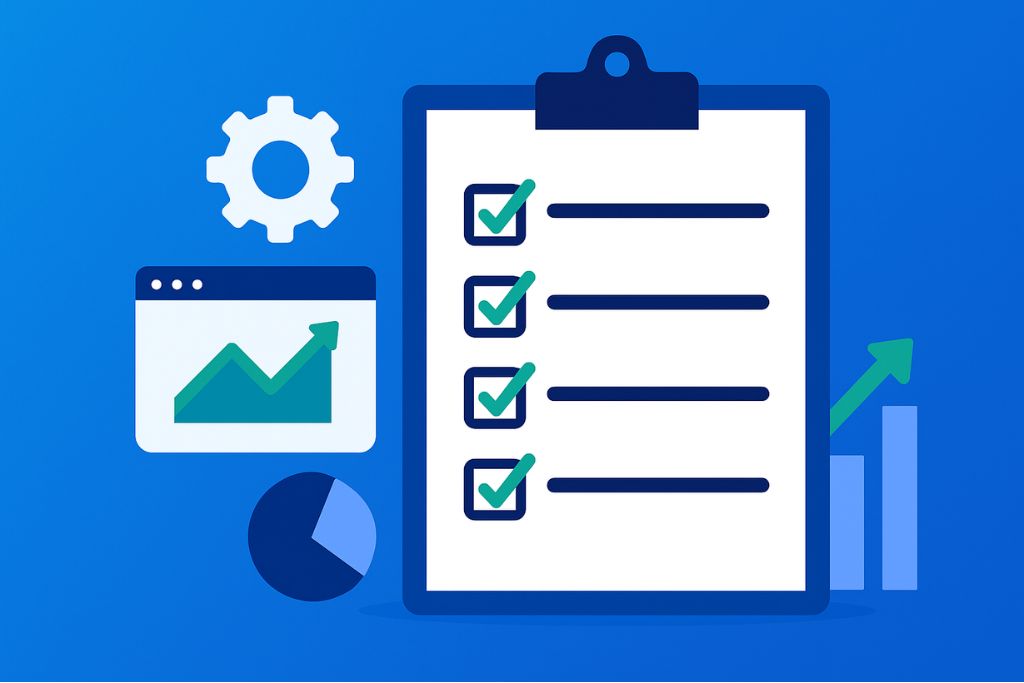
A well-optimized SaaS website is essential if you want to attract organic traffic, convert visitors, and scale consistently. Even with great content and a solid offer, you won’t see results if your site is slow, unclear, or not aligned with search intent.
That’s why having a proper saas seo checklist matters. It helps you focus on the areas that directly impact rankings, user experience, and conversions. At saasseo.com, we use a proven approach that covers technical improvements, on-page updates, and content structure to ensure long-term results.
Start with Keyword Alignment
Before optimizing anything else, make sure each page has a clear purpose and targets one main keyword. This keyword should match what your ideal customer is looking for — not just in terms of volume, but also in intent.
Use the keyword naturally in your page title, main heading, and early in your content. Supporting variations and related terms can be added throughout the page, but avoid overusing them. Clear keyword targeting helps both users and search engines understand what your page is about.
Strengthen Your Technical Foundation
Many SaaS sites struggle with slow speed, broken links, or missing files, all of which can hurt your rankings. Fixing these issues early makes a big difference.
Pay close attention to the following:
- Your site should load quickly, ideally under three seconds
- It must work well on all devices, especially mobile
- Use clean, organized URLs and ensure all pages are crawlable
- Submit a sitemap through Google Search Console
- Avoid broken links, outdated redirects, or blocked important pages
These technical details are the first step toward long-term organic visibility.
Improve On-Page Experience
Once someone lands on your site, they should be able to find what they need quickly. Good on-page structure also helps Google understand what your page is about.
Here’s what we focus on during on-page optimization:
- Write short, clear paragraphs and use subheadings for easy scanning
- Add internal links that guide users to related topics or pages
- Use calls to action that match the user’s stage in the journey, such as “Start Free Trial” or “Request a Demo”
- Include visuals and screenshots where helpful, and always use alt text for images
This layout helps people stay longer, click more, and convert faster.
Keep Content Fresh and Relevant
Publishing content is just the start. To stay competitive, you need to regularly review and update it. Check if your information is still accurate, if your examples are current, and if you’ve included helpful elements like FAQs or new insights.
Refreshing content improves both rankings and user trust. It also gives you a chance to add internal links, update keywords, and improve conversion opportunities.
Optimize for Conversions, Not Just Clicks
Traffic doesn’t matter if it doesn’t lead to action. Your site should guide users toward booking demos or trying your product.
To support conversions:
- Place CTAs in natural spots throughout the page
- Add trust signals like testimonials, logos, and success stories
- Keep forms short and easy to complete
- Remove distractions that pull attention away from the next step
Your goal is to create a website that doesn’t just rank, it moves users forward in the funnel.
Use the Checklist Consistently
The most important saas seo tip is to treat this checklist as an ongoing tool. Revisit it regularly, especially after website updates, new product launches, or major shifts in traffic. Consistent attention to the basics leads to better rankings, more qualified leads, and long-term growth.
A strong saas seo strategy starts with a strong website. With the right setup and a focused approach, your site can become one of your best-performing growth channels.
SaaS SEO Tips to Improve Rankings and Drive Demos
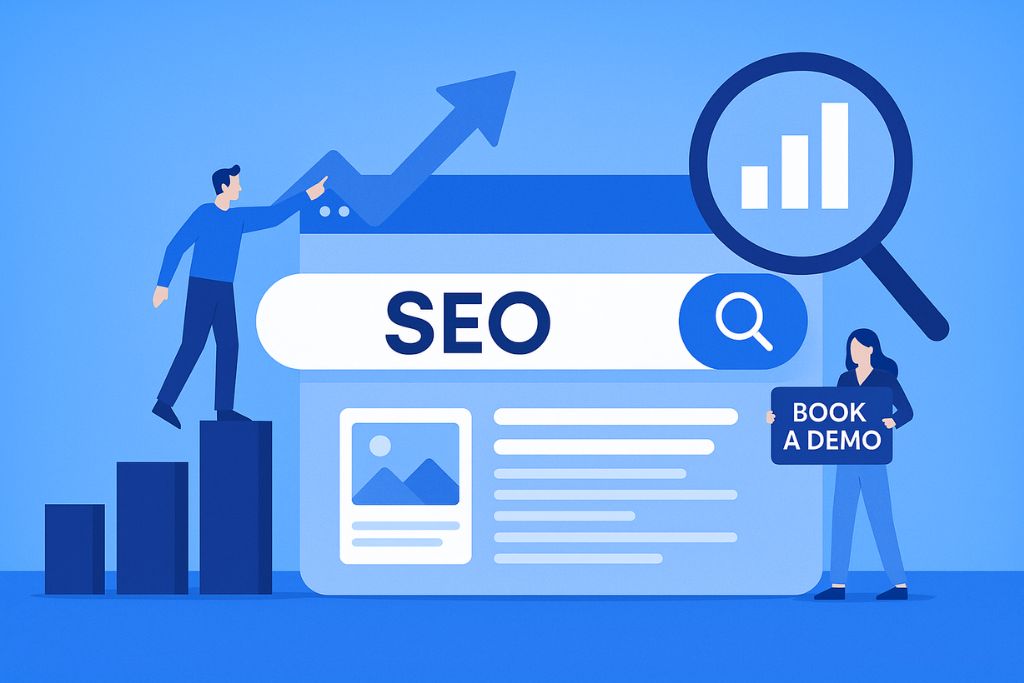
To grow your SaaS business through search, you need more than content. You need the right moves applied at the right time. These practical tips come from experience and are part of every solid saas seo strategy.
Here’s a quick list of tips to help boost your rankings and bring in more demo requests:
- Start with keyword intent. Use keywords that match what your buyer is searching for, not just what has the highest volume.
- Follow a clear saas seo checklist. Make sure your pages are fast, mobile-friendly, and easy to navigate.
- Use your main keyword in the page title, meta description, and first paragraph — but keep it natural.
- Write in short paragraphs with simple language. Your content should be easy to read for busy decision-makers.
- Add internal links to related pages to keep users engaged and help Google understand your site structure.
- Use strong, clear CTAs. Guide visitors toward actions like “Book a Demo” or “Try Free.”
- Update older content regularly. Refresh stats, improve examples, and make sure it still matches search intent.
- Optimize images with alt text and make sure they don’t slow your page speed.
- Don’t forget about your blog. A well-written post from your saas seo guide can drive consistent traffic if it’s kept fresh.
The best saas seo tip is to think long-term. Every small step adds up to steady growth and better results over time.
Common SaaS SEO Mistakes and How to Avoid Them
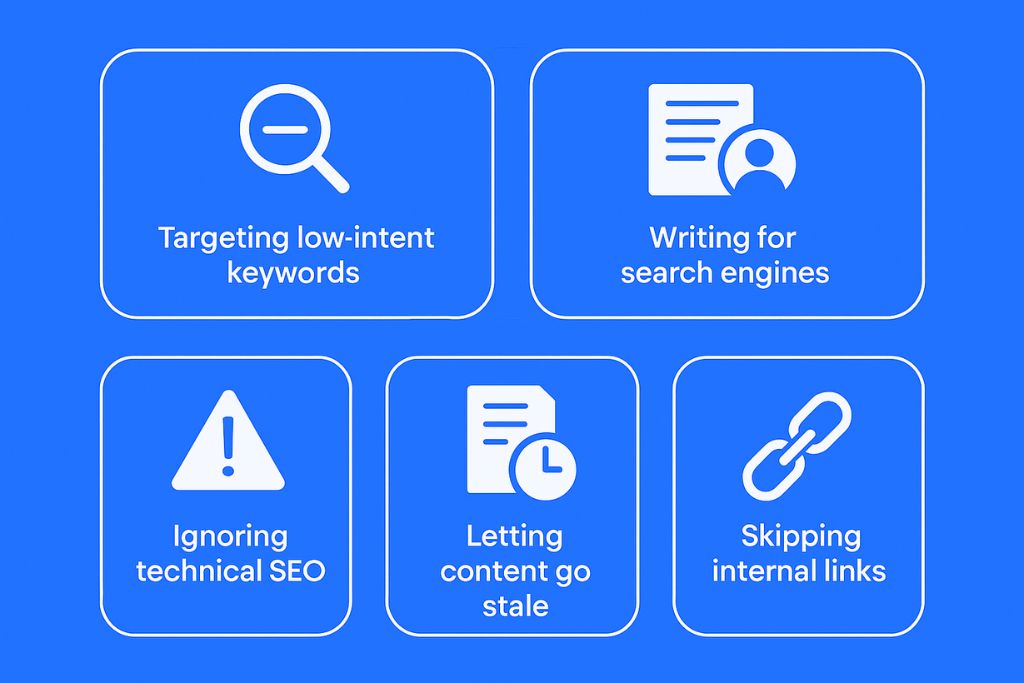
Even with the right tools and strategies, many SaaS companies struggle to get results from SEO. Most teams work hard, but it’s the small mistakes that often get in the way. Things like picking the wrong keywords or missing technical issues can hurt your rankings without you even noticing. Over time, these slip-ups lead to less traffic and fewer demos.
Below are some of the most common issues we see in saas seo, along with simple ways to fix them. These tips are based on real-world work with SaaS brands and are part of every complete saas seo guide we use.
Targeting broad or low-intent keywords
Many SaaS companies go after keywords that seem important but don’t lead to conversions. General terms bring in traffic, but not necessarily the right kind of traffic.
- Solution: Choose focused, intent-driven keywords that match the problems your audience is trying to solve. Use specific phrases like “CRM for remote teams” instead of just “CRM.” A good saas seo strategy always starts with keywords that align with business goals.
Writing content just for search engines
Pages overloaded with keywords or lacking clear value turn people away. Search engines may notice, but users won’t stick around.
- Solution: Write for your users first. Offer helpful answers, use a natural tone, and make your content easy to read. Valuable content ranks better and keeps users engaged.
Ignoring technical SEO
Slow loading, poor mobile design, or broken links make it harder for both users and search engines to engage with your site.
- Solution: Run regular technical checks. Make sure your site loads quickly, works across devices, and has no crawl issues. These basics are core to solid saas seo performance.
Letting content go stale
Content that hasn’t been updated in months or years can lose its relevance and drop in rankings.
- Solution: Refresh your content regularly. Update stats, improve examples, and make sure it still answers the right questions. A good saas seo guide includes content upkeep as a long-term practice.
Skipping internal links
Without strong internal linking, even your best content may go unnoticed by search engines and users.
- Solution: Link related pages naturally. It keeps users exploring your site and helps search engines understand your content’s structure.
Avoiding these common mistakes can make a big difference. Whether you’re new to SEO or improving an existing strategy, small fixes lead to steady wins. By following a complete saas seo guide, staying consistent, and focusing on value, you’ll not only rank higher but you’ll bring in better leads and drive real business growth.
Build a Winning SaaS SEO Strategy That Scales
A successful saas seo strategy is more than just ranking a few pages. It’s about building a system that consistently drives the right traffic, turns visitors into leads, and supports long-term growth.
Start with a solid foundation. Focus on high-intent keywords, a clear site structure, and helpful content that solves real user problems. Every landing page, blog, or product page should guide your audience through their journey. To rank well, avoid using generic AI-generated content. Search engines prioritize original, well-written content that provides real value. When your content matches what people are looking for, growth follows.
Scaling means staying consistent. A single blog post won’t move the needle. What works is publishing regularly, keeping content fresh, and making data-driven improvements. A reliable saas seo guide includes audits, tracking, and updates as part of your ongoing process.
It’s also important to work across teams. Ask sales and support teams what users care about their insights can shape your content, keywords, and page structure. Scalable SEO supports the full customer journey, not just awareness.
Avoid chasing vanity metrics. More traffic doesn’t always mean more revenue. Focus on the actions that matter demos, signups, and retained users. Monitor performance, refine what’s working, and remove what’s not. A smart saas seo strategy doesn’t try to do everything at once. It scales by building momentum, step by step.
Want to grow your SEO pipeline with less guesswork? Start with a clear audit, or partner with a team that knows how to scale SaaS SEO the right way.
Author
-

David is a data-driven marketer with a proven track record of success in paid advertising campaigns. He leverages his in-depth understanding of SaaS and B2B marketing to create targeted campaigns that generate high-quality leads. David also excels at crafting compelling content that aligns with your ABM strategy, nurturing relationships with key accounts.
View all posts
